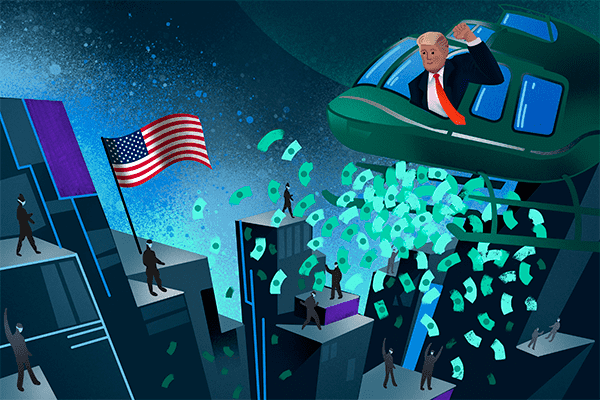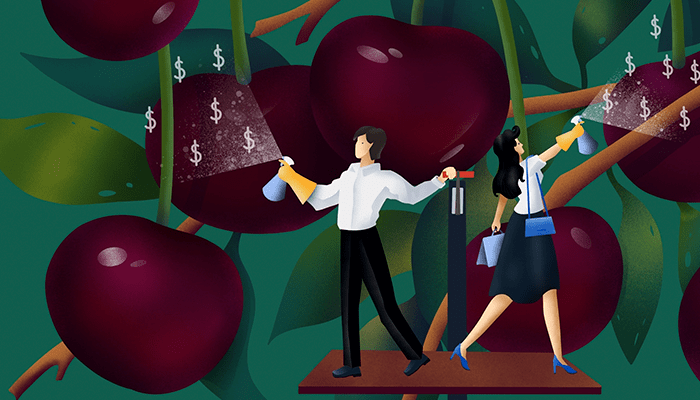- The CARES ACT is not TARP
- CARES will help with the restart in a few ways
- Americans are getting $1200 this month but what about inflation?
- Short-run Economic Effects of the CARES ACT
- So…modest to say the least.
- Hold onto your seats, folks.
It is about this time that my family and friends come to me and ask me to put my Economics degree to proper use. I am an expert snake-oil salesman taught by the best snake-oil salesmen, but sometimes a little snake-oil can help the medicine go down.
Since Alexandr reviewed the CARES ACT at the beginning of April and what it means for plan participants, we are seeing the full picture around the effect of the $2.3 trillion coronavirus legislation.
The CARES ACT is not TARP
Don’t fall into the trap of thinking the CARES Act is similar to TARP or the 2 other Fiscal relief policies during the Great Recession. The CARES Act is equal to the total cost of those three past laws but will affect the economy much differently.
CARES will help with the restart in a few ways
- Forgiving loans to small businesses if they are used to maintain payroll.
- Stock options and other equity instruments are being used to help corporations instead of traditional loans.
- Many regulations dealing with student aid should make it easier for students to endure the crisis and resume studies.
Americans are getting $1200 this month but what about inflation?
Yes, what about inflation, indeed? For years the Fed used a 2% price level increase as its annual benchmark, but that has never been a true goalpost. Suddenly it’s on many minds but it is still not a short-term concern.
At this point, that does not seem to be the concern of lawmakers who, in fact, wanted to put taxpayer money back into the hands of the American taxpayer without creating a “disincentive to work”.
Sure, inflation is caused by more money in circulation chasing after a fixed amount of goods and services. But, where are we to spend our measly $1200? Beyond food and consumer staples, demand is not going after much else and the closing of restaurants is causing food supplies to turn rancid. So, in this shutdown most non-essential businesses are shut-down and you can bet that people hoard cash more fiercely than toilet paper.
Expectations are also a driver to inflation (Fischer equation, anyone?). If people expect prices to rise in the future, then they will try and buy goods now. Yet, I don’t think there are many consumers who are bullish about the economy picking up speed anytime soon and there are more and more reasons to stay realistic.
The COVID-19 government allowance is less than 1 month of minimum-wage earnings ($7.25/hr). In 2008, people mostly saved their payments to brace against the worst of the crisis. This time, though, households are more leveraged with auto, credit card, mortgage, and student loan debt that saving the measly $1200 will be a luxury. In some instances, the debt is so overdue that banks seize allowance before families can spend the money on necessities.
Short-run Economic Effects of the CARES ACT
(From the Penn Wharton Budget Model)
- Without the CARES Act, US GDP would have fallen at an annualized rate of 37% in 2020 Q2, with the unemployment rate reaching 12% by 2020 Q3.
- The CARES ACT will dampen the GDP decline to 30% in 2020 Q2 and the unemployment rate will reach 11% by 2020 Q3.
- Produce around 1.5 million jobs by 2020 Q3 and increase GDP by $812 billion over the next two years.
So…modest to say the least.
With another 4.3 million workers filing for unemployment last week (bringing the total to 26.3 million since late March), I don’t know that anyone will herald 1.5 million jobs by Q3. Much of the CARES Act is dedicated to rescinding more business tax restrictions that will benefit high-income households with more than $1 million in income. Those households are far less likely to spend new income and will generate little boost.
Yet, the Penn Wharton estimates also show a dismal figure: the multiplier output effect i.e. how much residual economic output will be produced by the CARES Act. The greatest effect comes from transfers of cash into low-income and unemployed households (0.4 – 2.1) while, not surprisingly, cutting high-income taxes is the least. The fact that even the highest multiplier estimates are so low may indicate that the benefit of more cash and liquidity will be minimal and slow (a trap I’ll show more of in the next post).
Hold onto your seats, folks.
The 2007-2008 recession was largely caused by a sudden decrease in economic consumption – i.e. the demand side of the economy. Restoring the economy back to its full roaring potential required renewed confidence and cheap borrowing to spur investment and consumption.
Shaking off the risk aversion from the lockdown will be difficult, but what about a second or third?
Crises do offer a fresh perspective on old ways of thinking. Adopting some new habits, as I wrote in this article, may help you stay positive and resist fearful negativity.




